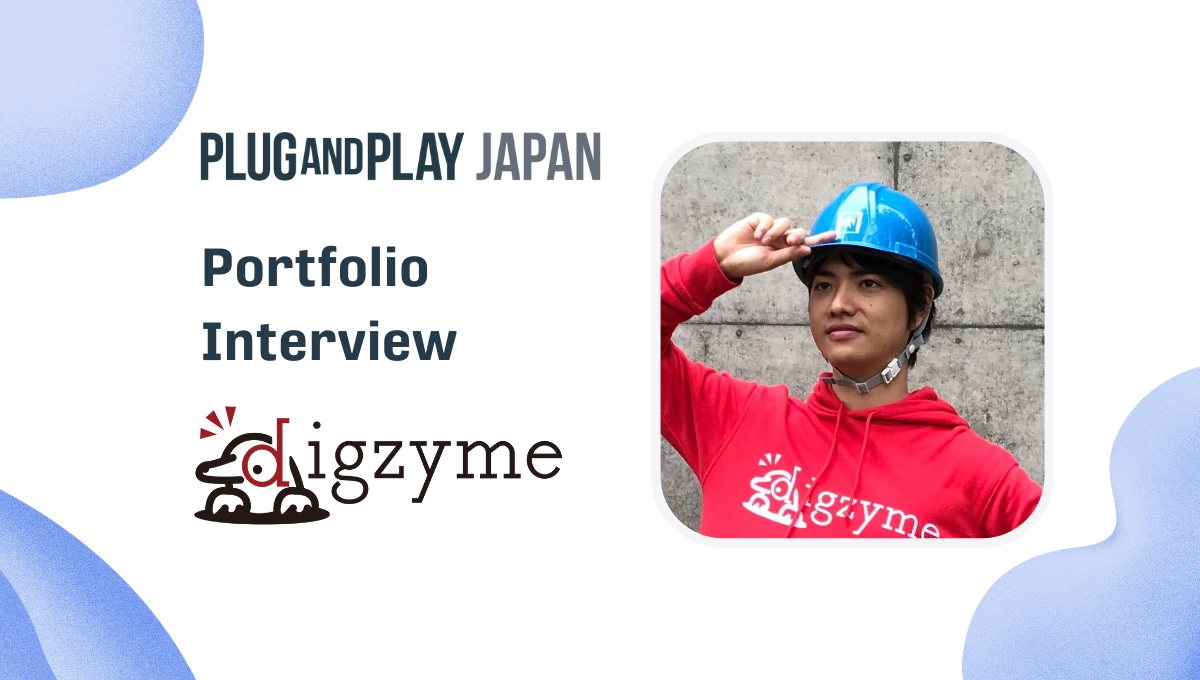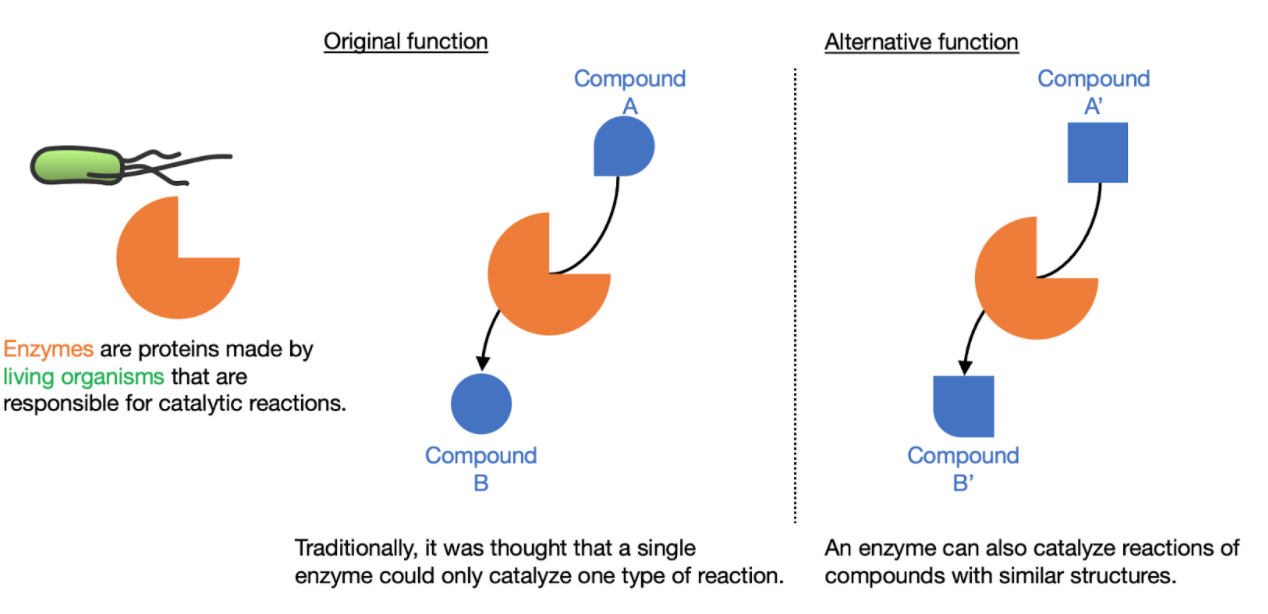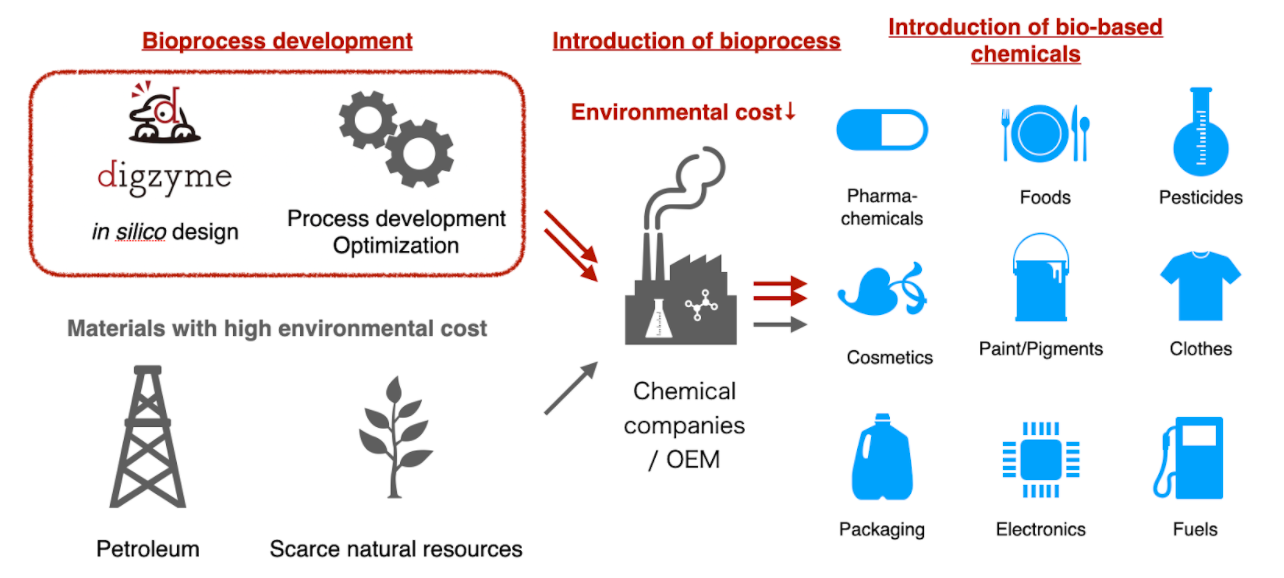Uncovering the Potential of Enzymes -An Interview with digzyme
2022/11/28

Mankind has used enzymes for thousands of years. Now, they are attracting attention as catalysts for bioprocessing, a method of producing substances with minimal environmental impact. We interviewed digzyme, a bioinformatics startup from the Tokyo Institute of Technology, to find out if digzyme is a potential catalyst for revolutionizing society.
Naoki Watarai
Co-Founder, CEO
Naoki Watarai co-founded digzyme in 2019 during his third year of doctoral studies at the Tokyo Institute of Technology, and became the CEO in 2020. During his undergraduate years, he won the gold medal and the Best Information Processing Project award at iGEM, an international synthetic biology competition. He then entered the graduate school and joined a laboratory there, where he worked on several topics including large-scale metagenomics, single genome analysis, evolutionary analysis, and, simulation, as well as the development of a gut microbiome at a venture firm in its early stages.
Writer: Chiyo Kamino
Communications Associate, Kyoto
ーー First of all, could you give us a brief background of your startup?
We formally established the company in 2019, but I started thinking about founding the company about six months prior, at the end of my second year of doctoral studies. I was originally planning to go into academia to do basic research, so I wasn’t really thinking about finding a job. From my fourth year of undergraduate studies to my second year of doctoral studies, I worked part-time as an analyst for a university spinoff startup called Metagen.
Through this experience, I started thinking about how to give back to society using our knowledge, and whether there was a way to directly apply our research results to society. When I thought about the role I could play in that, I thought it would be better to work with both industry and academia rather than focus solely on academia. Digzyme’s enzyme search was technically easy to use and applicable, but our knowledge wasn’t being utilized to its full potential. I thought that this would be the perfect field to start my own business in. Through the joint research I had done up to that point, I had gained a good understanding of what kind of problems companies were facing.
ーー Please tell us more about your business of enzyme gene discovery (digzyme Moonlight).
In a nutshell, our business is “discovering genes.” We are in the business of analyzing genes and searching for useful genes among those that are currently not being used. We imagine this process as digging out genetic resources that are hidden and buried underground, so we chose the company name “digzyme” by combining the words “dig” and “enzyme” in the spirit of digging the genes up.
The name of the service Moonlight was inspired by the way enzyme genes work. An enzyme is a molecule that is responsible for converting a specific substance. For example, let’s say there is an enzyme that can convert substance A into substance B. Basically, an enzyme can only convert one substance, A to B, but in rare cases, it can convert a similar substance as a secondary function. This phenomenon is called “Moonlighting” — referring to “working at night under the light of the moon” or side-work. Our technology is designed to find such moonlighting enzyme genes.

(Image: courtesy of digzyme)
When you make something, you have to think about how to create it and how to dispose of it. However, it is difficult to synthesize or decompose what we want to produce using only the enzymes available in the world today. For example, it is generally believed that PET bottles cannot be decomposed naturally because they were created by humans.
On the other hand, it was announced in 2016 that a microorganism called Ideonella sakaiensis, which was discovered at a PET bottle recycling site, has the ability to break down PET. The reason why this bacterium is able to degrade plastic is thought to be that it had a gene for an enzyme that was used for a different purpose or did not necessarily have a specific function, but it happened to be able to use it to degrade PET. Thus, it survived and evolved in the PET bottle recycling site. Such moonlighting is one of the most important functions of enzymes.
However, it took about 10 years to make such a discovery. Our technology is trying to search for such enzymes more efficiently. When we create a new substance, we can’t just build a disposal site and then wait for decades to find an enzyme that can break it down. For this reason, we are trying to find and narrow down candidates from the genetic experiments we are conducting now, hypothesizing that a certain enzyme is likely to react in a given situation.
ーー Materials informatics and genome analysis are areas that are attracting a lot of attention, but are there any particular startups or companies that you are targeting?
Our technology is platform-based, so in terms of similarity, PeptiDream is one of our targets. The business scheme of maturing our own platform and conducting joint research on products using the platform is quite informative, and we can become as big as PeptiDream one day.
In the biotech industry, I often use Zymergen as a benchmark for platform-based businesses. If we try to do the same level of business as them in Japan, people may think we are too expensive because our target market is not that big. But we are aiming to be like them in terms of business model. Of course, there are financial obstacles and other issues that we have to deal with in order to compete, but we are confident in our technology and believe that we can win in that area if we focus on it.
ーー I understand that you are also thinking about expanding overseas. What regions are you considering for entry?
The United States is the largest market. However, our biotechnology business itself enhances environmental value. Europe has a high level of environmental awareness, so we are also considering Europe as a possibility.
In Japan, I feel that the value of reducing environmental impact has not yet been recognized. It will take a few years for our company to grow, but I think that by that time environmental awareness will have caught up in Japan.
ーー Your technology can be applied to various fields. What industries and applications do you receive considerable inquiries about?
Most of our current inquiries are from chemical manufacturers who already have experience in the biotechnology business and have their own products. Then there is the occasional food manufacturer.
Regarding what we create, we receive the most inquiries about petrochemical products. There are two types of bioplastics: plastics made by bioprocesses and plastics that can be degraded by biotechnology, and we receive many inquiries about both.

(Image: courtesy of digzyme)
ーー What kind of partners would you like to work with in the future?
Our greatest strength in enzyme discovery is that we can produce natural products and also produce products we did not know how to make before. We are considering pharmaceutical manufacturers and pharmaceutical raw material manufacturers as partners, but we haven’t received any inquiries yet. When we talk to them face-to-face, they tell us “That’s very interesting!” but it’s hard to move on from that point, and that is one of our biggest challenges.
It is difficult because pharmaceutical companies that manufacture drugs tend to have the attitude that “if you make it by organic synthesis, then you should make it.” On the other hand, I think there is a definite demand for supply from manufacturers that use natural products as raw materials for pharmaceuticals, so I would like to get involved in that area.
ーー What is the reason you accepted investment from Plug and Play?
The deciding factor for me was Mr. Oiwa… I guess it’s strange to say that (laugh). Of course, that wasn’t the only reason. We had been thinking about expanding overseas from the beginning, but I think it’s difficult for a Japanese company to suddenly expand abroad. We’re still in the process of building up our technology, and we haven’t been able to produce enough numbers to prove that we’re the best in the world. I’d like to make use of Plug and Play’s global network to connect with overseas companies through PoC-level joint research.
ーー What is your vision for the future?
I would like to make bio-production more common. For example, there is a bioplastic called PHA, but it is only used in a small percentage of plastic bags at convenience stores. It is expensive, so it is not used very often. I have a vision to create an economically viable method of material production so that more people in the industry will want to use bio-production methods. We are currently building a platform for this purpose.
This is what Zymergen is also aiming for, and I believe that in the next 10 to 20 years, a percentage of products we use in our daily lives will be biotechnology products. I would like to show leadership as a pioneer in this field and for digzyme to become a company that can be relied on overseas as the best in our realm of technology.
